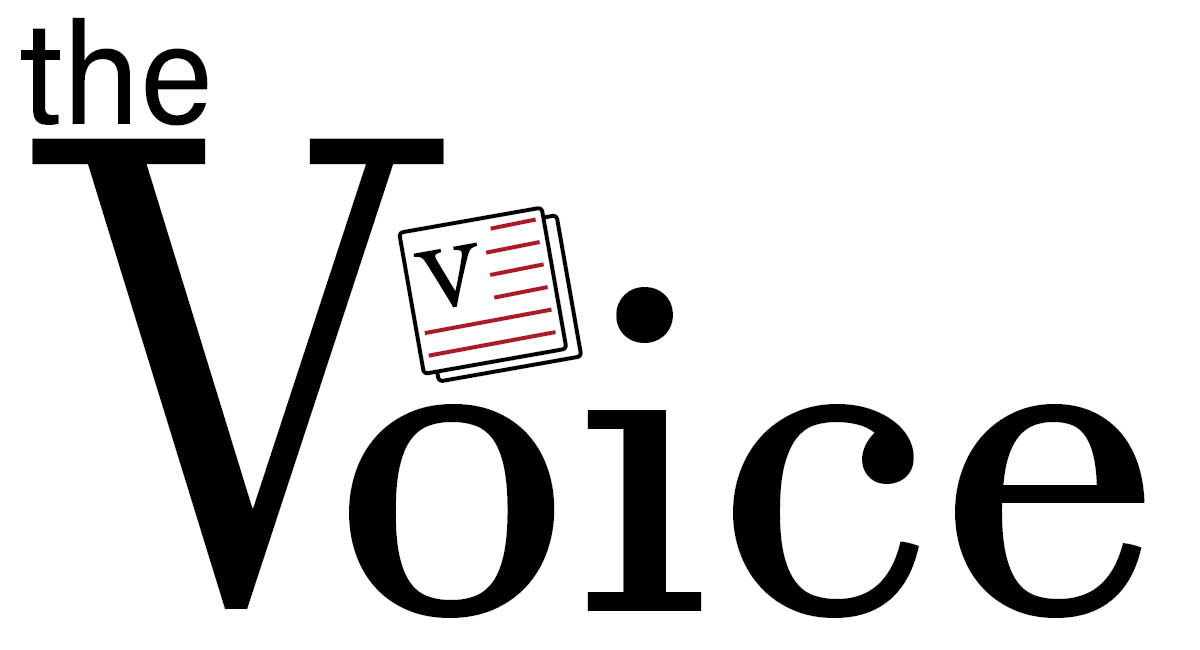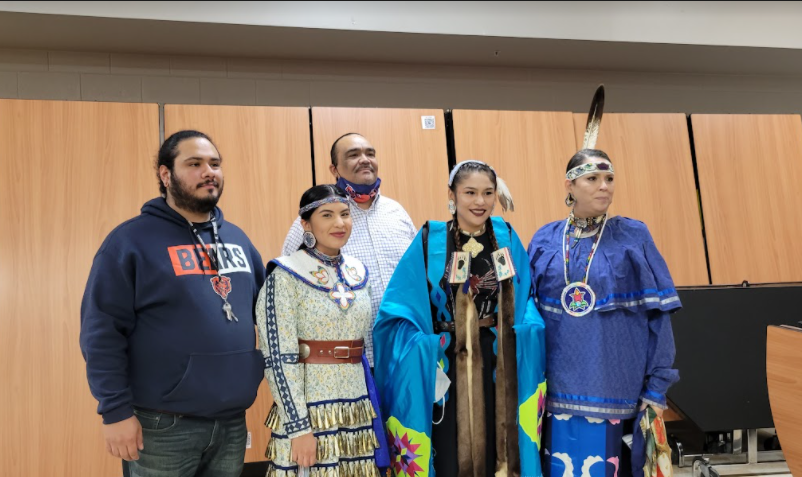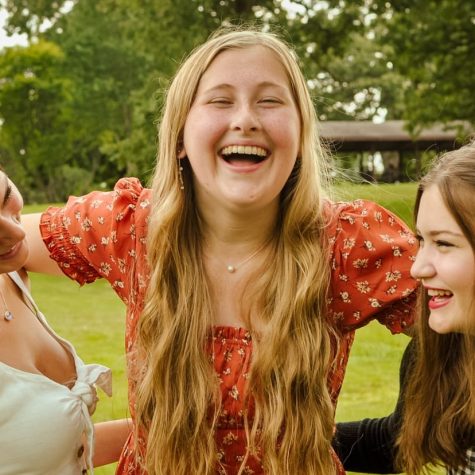RAD holds a social gathering to hear about Native American culture
Trickster Cultural Center shares traditional dances, the origin of Huntley’s Traditional Homelands, and more
RAD’s second big event brings Trickster Cultural Center representatives and dancers to the cafeteria at Huntley High School
November 18, 2021
In honor of Native American Month, Huntley High School’s Recognizing American Diversity club hosted an event with the help of the Trickster Cultural Center to bring awareness to their culture.
“We were talking about how to make sure that we don’t represent a group of people by putting them up on a bulletin board,” said Brian Truax, social studies department chair and co-leader of RAD.
It was held from 6 p.m. to 7 p.m. in the cafeteria after school Wednesday, Nov 17. RAD provided coloring sheets and cups of fresh popcorn, which later, with the help of Trickster’s program director, Gina Roxas, taught everyone that corn and many other popular foods originated from the Native Americans.
The audience was taught the origins of Huntley and that it is on the Traditional Homelands of the three fires: ojibwe, odawa, and potawatomi.
Throughout the night, Trickster put on six different dances and taught everyone in the audience about the culture behind each tribe the dances derived from.
One of these dancers, Maritza Garcia, stepped onto the center of the floor and danced, but not just for entertainment. In her culture, this dance, and especially her dress, represent healing.
The cones on her dress that made a jingling noise are made from lids of tobacco, as Native Americans use tobacco for medical purposes. This style of dress was created in response to the Spanish Flu 100 years ago. Girls would put on these dresses and dance to radiate a positive healing experience for all of those who fell sick to the flu.
During the three dances that each woman put on to represent their own culture, two men sang and played drums. These drums, known as hand drums, were made out of deer hide. In the Native American culture, these drums are used in social gatherings and create a sense of friendship and understanding.
Despite all of these traditions and facts that the audience was taught, RAD and Trickster hope everyone understands the bigger picture.
“This club is all meant to diversify the narrative and the understanding of different cultures within Huntley’s community, and I think it is something we should all strive to do,” said Merrick Ramza, English teacher and member of RAD.
The night ended with a song that they refer to as their Traveling song. This is typically sung at the end of a gathering and is like a prayer to wish everyone safe travels back to their home.
During this song, members of the audience were invited to dance to the Traveling song with the dancers. Around half of the audience ended up joining them in their circle on the floor as they joyously danced to the music.
Children, adults, and the elderly all danced with the Native Americans to their music and had a moment of understanding and appreciation of their culture.
“The takeaway would be that a young child, maybe even non-native, would come back and teach what they learn to somebody else and say ‘I learned this from a person that is ojibwe or potawatomi’. Instead of saying ‘oh I googled it and this is what Native people do,” said Gina Roxas, program director at Trickster Cultural Center.
One of the words they taught us was the meaning of thank you: Meegwetch. So, to appreciate their time and effort into teaching us about their culture, we say “Meegwetch.”



